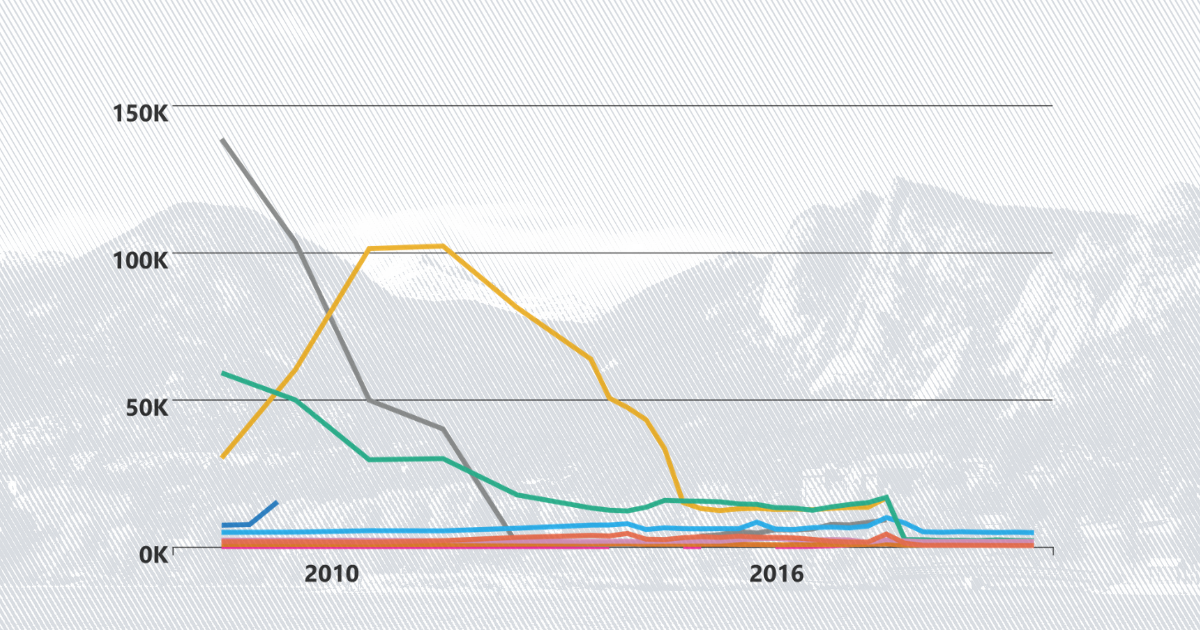Defense and security
How is the standard of living changing for veterans?

The US war in Afghanistan began Oct. 7, 2001, less than a month after the September 11 attacks. The initial mission of the conflict was to destroy terrorist training camps, capture Osama bin Laden and other terrorists associated with the al Qaeda, and prevent Afghanistan from remaining a safe haven for terrorist organizations.
The mission shifted throughout the almost 20 years that followed and troop levels fluctuated as the political realities in both the US and Afghanistan changed.
With the last US military forces leaving Afghanistan in August, the conflict officially ended. The war in Afghanistan is the longest war in US history, five months longer than the Vietnam War.
Initial troop levels
The first US troops touched ground in Afghanistan in Sept. 2001. The initial force was about 1,000 special force troops, supported by US air strikes. In October 2001, another 1,300 US Marines were deployed to the country. The governing force in Afghanistan at the time was the Talban, “an Islamist nationalist group” that had ruled the country since the mid-1990s, according to a report from the Director of National Intelligence. The US accused the Taliban of shielding the terrorist al Qaeda organization responsible for the 9/11 attacks. By the end of the year, US forces and its allies took control of most of the country from the Taliban and established an interim government, led by Hamid Karzai. The United Nations Security Council created the International Security Assistance Force as a peacekeeping force in Afghanistan in late 2001 as part of the Bonn Conference.
‘Major combat’ over
The Bush administration declared major combat operations over in Afghanistan in May of 2003. Official troop figures from the time period are unavailable. Later that year, NATO troops took control of the UN peacekeeping forces that had been established by the UN security council.
Between 2003 and 2005, Afghanistan’s new government wrote a constitution and held multiple democratic elections for its political leaders. Government data on troop levels in Afghanistan are not available from 2002-2004. Reports from the Defense Manpower Data Center for those years do not identify the number of troops in Afghanistan.
Insurgency erupts
The Taliban, having faced heavy losses in open combat with US and NATO forces, started evolving their tactics around 2005. The group began using suicide bomb attacks and detonating explosive devices instead of engaging with US and NATO forces directly.
US troop levels remained steady at around 20,000 throughout this period, but NATO leaders started discussing a time frame to wind down efforts. The Secretary of Defense at the time, Robert Gates, openly criticized NATO allies for not contributing more troops to the effort.
Troop ‘surge’ in Afghanistan
President Barack Obama pledged a commitment to the Afghanistan conflict, sending thousands of additional troops to counter the Taliban insurgency and to find Osama bin Laden and his collaborators.
Between 2008 and 2010, the number of US troops in Afghanistan rose from about 30,000 to more than 100,000, according to reports from the Defense Manpower Data Center.
Death of Osama bin Laden
In May 2011, US special forces killed Osama bin Laden in a raid in Pakistan. Not long after, President Obama announced a withdrawal of more than 30,000 troops by the summer 2012.
US continues draw down of troops
In May 2014, President Obama announced a timetable for the withdrawal of most US forces in Afghanistan by the end of his second term in 2016.
New administration, new strategy
In June of 2017, President Donald Trump authorized his Secretary of Defense, Jim Mattis, to send more US troops to Afghanistan. About 5,000 additional troops were deployed by the end of the year.
Troop levels decline
The US and the Taliban engaged in multiple rounds of peace negotiations in 2019 and 2020. As part of those negotiations, President Trump further reduced troop levels in Afghanistan by 7,000 during that time. .
In a February 2020 agreement with the Taliban, the US committed to a full military withdrawal from Afghanistan by May 1, 2021.
US leaves Afghanistan, Taliban retakes country
President Joe Biden announced in April 2021 that the US was moving back its full withdrawal of forces from Afghanistan to Sept. 11, 2021. In July, President Biden adjusted the timeline and announced the conclusion of the military mission in the country on Aug. 31. In mid-August, the Taliban took over the country’s capital of Kabul. The US deployed additional troops to assist in evacuating American citizens, locally hired US staff and Afghans eligible for special immigrant visas.
On Aug. 26, thirteen US service members were killed in a suicide bombing at the Kabul airport. The last US troops left Afghanistan on Aug. 31.
Defense and security
Defense and security
Defense and security
Defense and security
Newsletter
Keep up with the latest data and most popular content.


